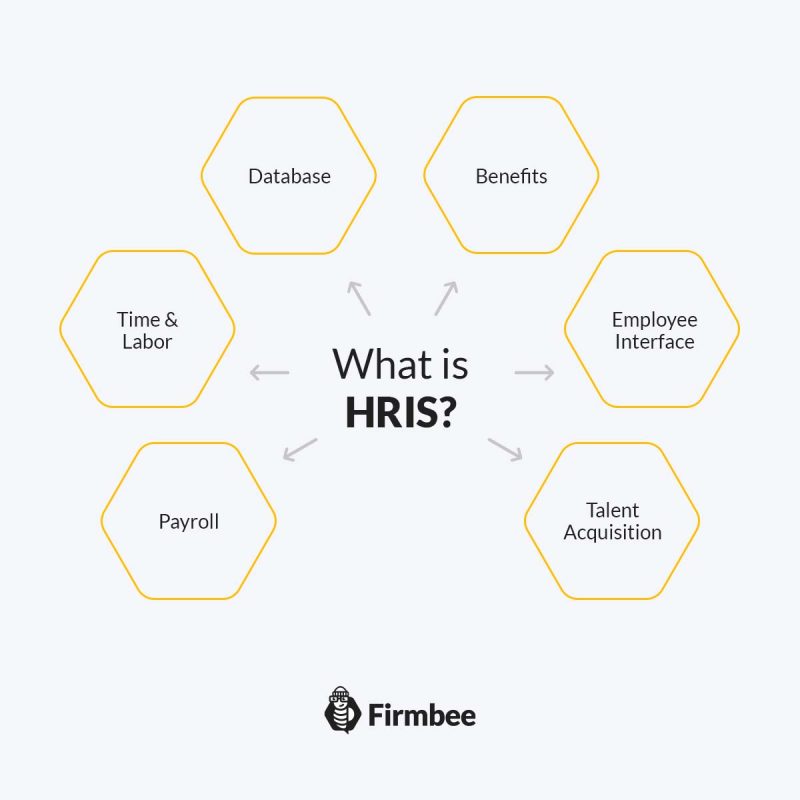What is HRIS? New technologies are increasingly used at all organizational levels of a business. They support the implementation and proper functioning of processes, thereby improving business efficiency. Established standards evolve with the changing environment and conditions, thus maintaining a high level of competitiveness in a dynamic market. This also refers to human resource management and HR systems that support personnel policies. One of such systems is HRIS, which is used for controlling the implementation of HR plans and objectives and supporting the work of the HR department. Read on.
What is HRIS? – table of contents:
What is HRIS
HRIS (Human Resources Information System) is a tool that collects and processes employee information and personnel procedures. It is a tool that enables management, control, and analysis. The system organizes personnel tasks and processes and maintains records and files that enable the generation of various types of reports.
Information is transferred in two ways, from the organization to the employees and back. The system significantly reduces bureaucracy by eliminating manual and paper-based HR processes. HRIS has got functions to support recruitment and acquisition of valuable employees, salary management, and time records (short absences, leaves, business trips).

Two pillars of HRIS
HRIS is based on two essential elements that form the pillar and foundation of an organization’s human resource management, thus ensuring improved overall efficiency. These are: organizational structure and employee data management.
In terms of organizational structure, the HRIS includes roles, functions, and reporting hierarchy. The system determines responsibilities and ensures functionality and operational consistency. The most valuable resource of any organization is human capital.
With automated processes supporting efficient recruitment, selection, and adaptation, it is possible to attract professional and qualified staff. Staffing employees in the right positions and in the right structure makes it possible to achieve planned strategic goals.
The second element of the HRIS system is employee data management. At this level, HRIS is similar to a CRM system, which deals with customer relationship management. In this case, however, it refers to the employer-employee relationship.
HRIS is a kind of knowledge base about employees, it collects all the necessary information in terms of sensitive data such as personal data, home address, date of employment, employment history, salary, rewards, and penalties received. The collected information is the starting point for individual employees’ professional development and career path planning.
It helps to match training to actual needs, thereby improving performance. What is more, the automation of processes enables standardization of documentation, reporting, and use of self-service functions by employees.

Functions of HRIS
HRIS consists of the two previously mentioned pillars. However, within each of them, we can use different features and tools. The optimal choice of functions depends on the size of the organization and its HR needs. When choosing a system, there are two key factors to consider:
- All aspects of human resource management should be reflected in the chosen system. There needs to be a complete and complementary solution for recruitment, onboarding of employees, training, development, and access to HR information.
- The system should ensure consistency between the HR and finance departments. Combining the HR and finance modules significantly reduces labor costs. It provides a clear picture of the achieved performance in relation to salary. The functioning and use of the system will be easier if the aforementioned modules are linked on one platform and based on one technology.
Summary
Technological progress and the development of digitization have had a huge influence on modern organizations. New IT solutions are aimed at streamlining business operations and achieving strategic goals. Automation of HR management processes changes the way people work, reduces costs, and facilitates control.
This has a lot of benefits, but it also comes with risks in terms of interpersonal relations, especially dehumanization in the workplace. Operating only on the basis of a computerized system can lead to the subjective treatment of employees, without giving them the opportunity to express their feelings, which in turn can cause stressful situations. That’s why it is so important to properly implement the HRIS system, considering the adaptation stage and convincing employees of the benefits of work automation.
If you like our content, join our busy bees community on Facebook, Twitter, LinkedIn, Instagram, YouTube, Pinterest.
Author: Nicole Mankin
HR manager with an excellent ability to build a positive atmosphere and create a valuable environment for employees. She loves to see the potential of talented people and mobilize them to develop.


















